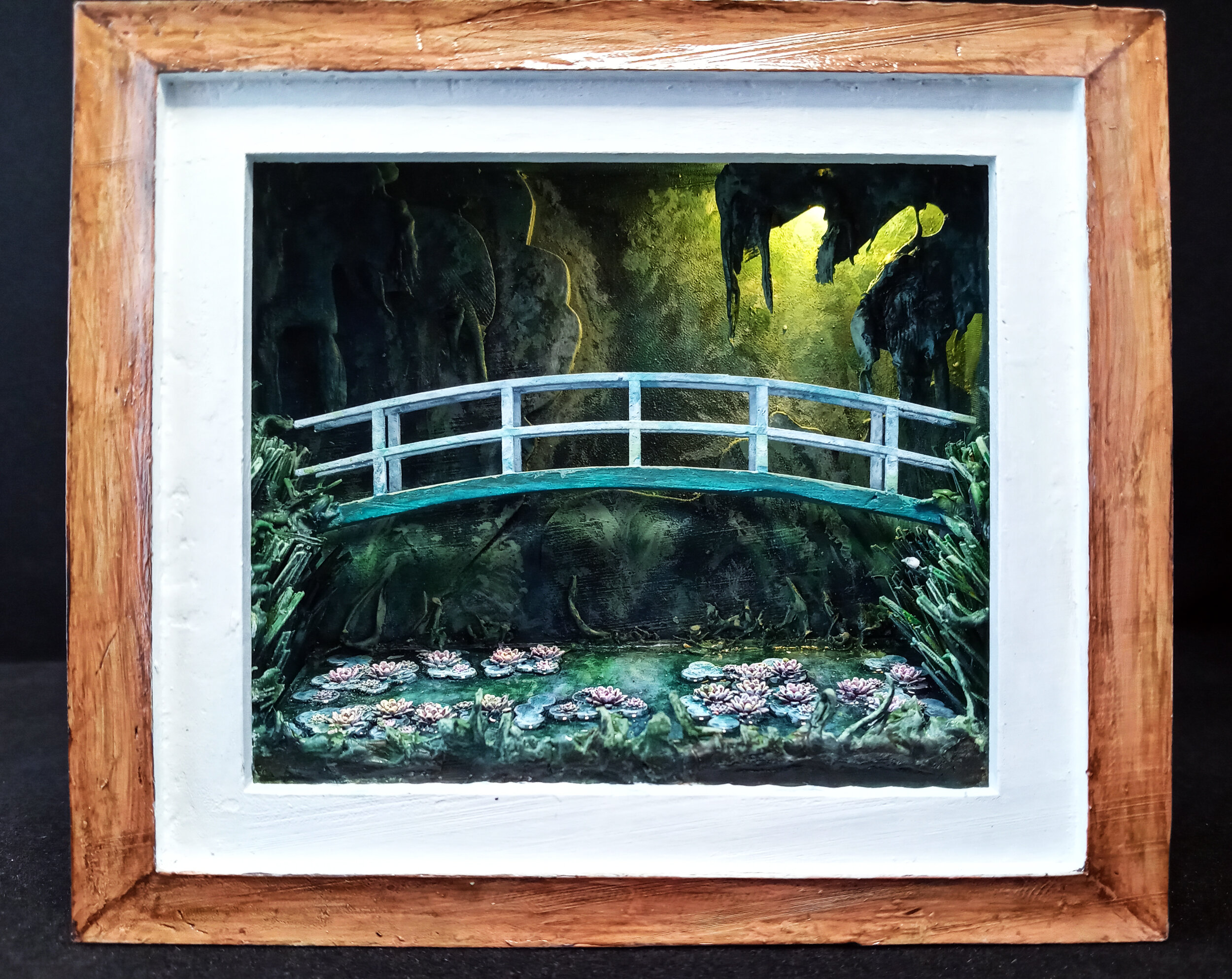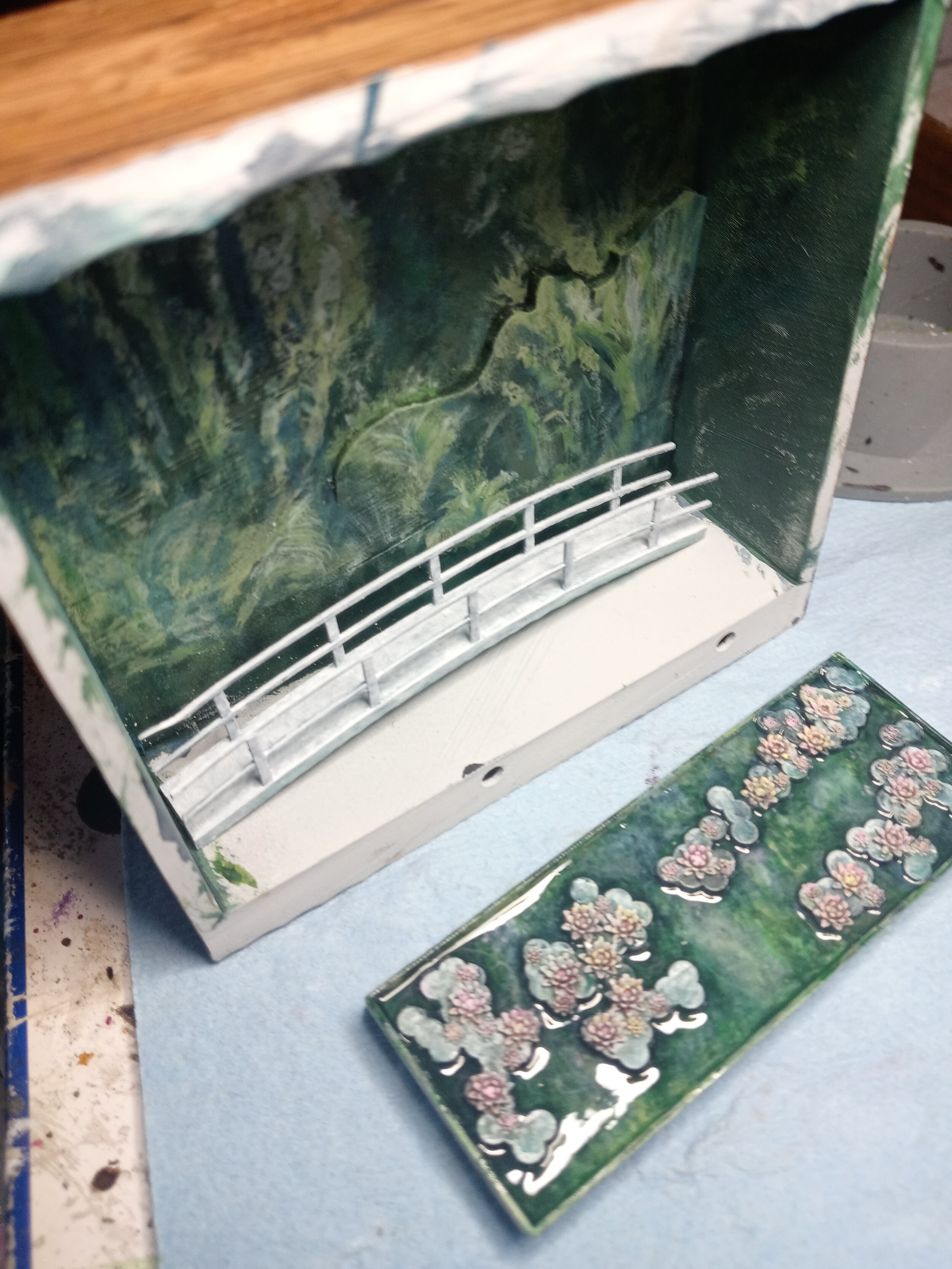Monet Made Manifest
When we got a 3D printer about six months back, my girlfriend and I had one of those brainstorming conversations where we’re both flying around the living room pacing and gesticulating, stacking ideas on ideas so fast we’re cutting off the ends of our own sentences. Every few minutes everything stops dead when someone says, “WAIT! I need to write this down!” This is the kind of conversation I want to have all the time, the real, pure, heroin-like ecstasy of being an artist working with other artists, the rush of making something together that is bigger than any of us could manage alone.
This one was about the limited scope of 3D-printed goods and gifts at the moment. Y’see, if you go looking for pre-made 3D models to print in your printer, what you’ll mostly find is figurines - tiny people and animals, usually on neat bases, intended for tabletop games. You can find other stuff, but it takes work, and an idea of exactly what you’re after, and you’ll probably have to tweak and support it yourself to make it print properly. I have a theory about why this might be.
Currently, a home 3D printer is a technofetishist toy; they’re expensive enough that only a power geek with disposable income would bother. This means that the people who mostly go out and buy such a thing, and thus the people mostly designing the models and making them available to others, are the people who were already involved in adjacent hobbies before 3D printing was a thing - they’re wargamers and D&D nerds.
That’s not a criticism, mind you - I’m a wargamer and a D&D nerd myself, as you can tell from my endless blithering about local game stores. When I run out of other stuff, I paint a ton of mini-figures, because obviously they’re fun and the models are easy to find. But I think that the demographics currently taking part in this hobby have a limited scope of imagination in terms of what they think to 3D-print. I think the more we interact as artists, the more we do multimedia art, share our disciplines, show each other our stuff, the more cool ideas we come up with. Sure, a wargamer wants to print figurines, but what if you asked a seamstress what they’d do with a 3D printer? What if you asked a teacher?
We came up with a lot of ideas that night - there’s still a list here somewhere on my desk, which has now transformed into an ever-expanding Google doc - but one of ‘em was this thought of converting classical paintings into 3D dioramas, a frame around a box perhaps two inches deep, in which the painting’s elements are reproduced in full 3D. It’s a fun new way of looking at your favorite historical art.
So this week we finished our first prototype for this idea:




This is a projection of Monet’s “Water Lilies and Japanese Bridge,” as a gift to my girlfriend’s mother who stans Monet. Cult Elder Viki Winter designed the model to allow us to put an LED in the upper corner - I think a lot of these little dioramas will want lighting, since they will be of necessity a little darker than the original piece due to the shadow of the box. I’d like that lighting to always be diegetic - I want it to come from something that exists in the scene whenever possible, to maintain the illusion of a painting come to life.
This kind of thing is so hard to take good pictures of, and so hard to pitch to people, really - I’ve taken paragraphs just to explain what I’m talking about to YOU, and you who have followed me all the way to this blog are my Best Beloved, my Devoted, willing to stick around however long it takes me to spit out something helpful. Most people aren’t so indulgent. I did take a little video so you can get a better look and a sense of the relative size.
Hopefully I will work out a better way to encapsulate this idea for marketing purposes, because I would like to do more as commissions. I expect something like this to be in the area of $80-100 depending on complexity and features. If you’d like to be able to poke your finger into your favorite painting, or stick a tiny dinosaur in it to devour Mona Lisa, or whatever, email me and we’ll get it goin’.
